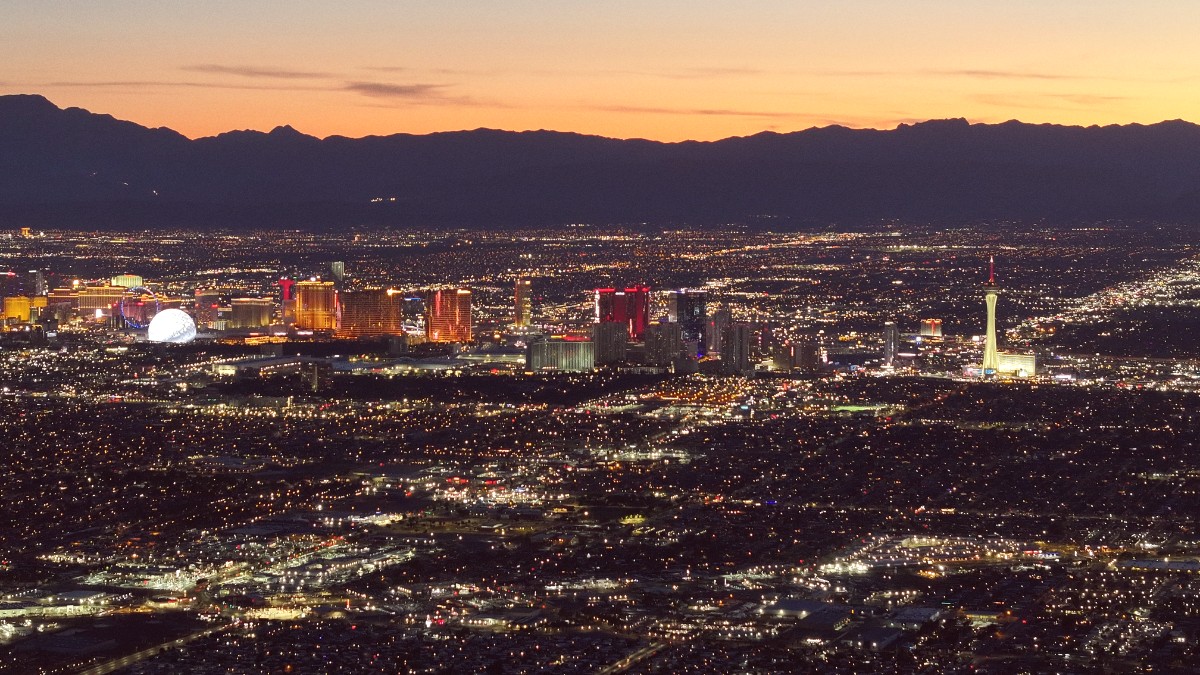
Nevada, USA
Deuce on the Strip: This double-decker bus runs 24/7 along the entire Strip. It stops at most major resorts, making it popular for tourists. The Deuce offers a budget-friendly way to see the Strip, though it can run slow due to frequent stops and heavy traffic. Fares are paid onboard (exact change or card) or via the rideRTC app. Strip & Downtown Express (SDX): The SDX stands as a limited-stop express bus that connects the Strip to downtown Las Vegas, the Convention Center, and premium outlet malls. It offers a faster choice to the Deuce for these routes.
Local Routes: Beyond the Strip, the RTC maintains an extensive network of local bus routes covering the wider Las Vegas Valley. These routes prove useful for exploring areas off the Strip, like local neighborhoods, shopping centers, or attractions like the Springs Preserve. Las Vegas Monorail: This elevated train system runs along the east side of the Strip, offering a quick way to travel between seven stations. These stations sit at MGM Grand, Horseshoe/Paris Las Vegas, Flamingo/Caesars Palace, Harrah's/The LINQ, Las Vegas Convention Center, Westgate, and SAHARA Las Vegas. The Monorail runs behind the resorts, so access means walking through properties from the Strip.
2-hour pass: $6. 24-hour pass: $8. 3-day pass: $20. Purchase onboard with cash, at vending machines, or via the RideRTC app.
Single ride: $5. 24-hour pass: $15. 2-day pass: $26. 3-day pass: $32. 4-day pass: $39. 5-day pass: $47. 7-day pass: $62. Buy at stations or on the Monorail website.
All RTC buses feature wheelchair access with ramps or lifts. Monorail stations have elevators and meet ADA compliance, ensuring accessibility for all mobility needs.
RTC buses offer the most economical option.
Monorail for quick east-side Strip travel.
RideRTC app for bus tracking and ticket purchase.
Utilize free resort trams.
Taxis and ride-sharing services are convenient, direct transportation choices in Las Vegas, specifically when you prefer not to walk or use public transit.
Always use licensed taxis from designated stands. Avoid unmarked vehicles offering rides.
Verify driver and vehicle details against the app before entering any ride-share vehicle.
Avoid sharing personal details with drivers. If uncomfortable, you hold the right to end the ride.
The Regional Transportation Commission of Southern Nevada (RTC) operates the public bus system. This system is an affordable and accessible transport method. The Las Vegas Monorail offers another choice for traversing the Strip. These two systems form the backbone of public transit for visitors.
2-hour pass: $6. 24-hour pass: $8. 3-day pass: $20. Purchase onboard (cash), at Ticket Vending Machines (TVMs), or via the rideRTC app.
Use multi-day passes for savings.
Single ride: $5. 24-hour pass: $15. Multi-day passes available (up to 7 days for $62). Purchase at stations or online.
Multi-day passes offer prominent savings for frequent use.
All RTC buses are wheelchair accessible with ramps or lifts. Monorail stations feature elevators and are ADA compliant.
Ensures travel ease for all mobility needs.
Las Vegas has several specialized transportation options that enhance the visitor journey. These methods connect resorts or supply distinct city views.
The Strip has several free tram systems connecting specific resorts. These offer a quick way to move between properties without needing a taxi.
The Venetian Resort provides iconic gondola rides on its simulated canals, a romantic and distinct experience. These do not serve as public transport.
Using these free and specialized options aids in managing transportation expenses while maximizing sightseeing opportunities.
Mix and match transportation methods based on your destination and budget.
For ultimate flexibility outside the Strip, a rental car is the top choice, but expect parking fees.